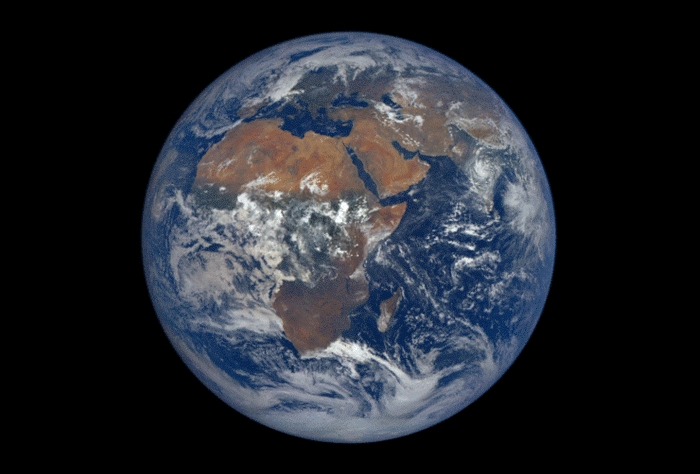مليار دولار قيمة سوق التلقيح الصناعي في الشرق الأوسط في ظل ارتفاع معدّلات العقم في المنطقة إلى 15%

أفادت أحدث دراسة أجرتها كوليرز إنترناشيونال بأن قيمة سوق التلقيح الصناعي العالمي حاليًا تُقدّر ما بين 10 و12 مليار دولار، بينما يبلغ حجم سوق التلقيح الصناعي بالشرق الأوسط وشمال أفريقيا حاليًا نحو مليار دولار، ما يشير إلى ارتفاع الطلب على التلقيح الصناعي والعلاجات ذات الصلة في المنطقة.
كشفت الأرقام المنشورة في تقرير جديد بعنوان “التلقيح الصناعي (IVF) والعقم في منطقة الشرق الأوسط وشمال أفريقيا” أنه مقارنةً بانتشار العقم بنسبة 10% على مستوى العالم، تصل نسبة العقم في منطقة الشرق الأوسط وشمال أفريقيا إلى 15% أو أعلى، مع تفاقُم مشكلة عقم الرجال التي تصيب حوالي 50% من الحالات بمنطقتَي الخليج والشرق الأوسط، ويعود ذلك إلى أسلوب الحياة بصفة عامة إلى جانب مرض السكري والسِمنة وعوامل وراثية ذات صلة، حيث تُعتبر معدّلات الإصابة بمرض السكري والسِمنة في دول الخليج من الأعلى على مستوى العالم.
في سياق متّصل، أكّد تقرير السوق من ميدلاب، الذي صدر قبل انطلاق فعاليات معرض “ميدلاب 2019” الذي يقام في الفترة الممتدة ما بين 4 إلى 7 فبراير في مركز دبي التجاري العالمي، أنه بالرغم من زيادة عدد السكان في منطقة الشرق الأوسط وشمال أفريقيا من أكثر من 100 مليون نسمة في عام 1950 إلى 380 مليون نسمة في عام 2017 والذي من المتوقّع أن يزيد إلى 700 مليون نسمة بحلول عام 2050، إلا أن معدّلات الخصوبة بصفة عامة قد انخفضت من سبعة أطفال لكل سيدة في عام 1960 إلى ثلاثة فقط في عام 2017.
يقدّم البحث تحليلاً تفصيليًا لمعدّلات الخصوبة في منطقة الشرق الأوسط وشمال أفريقيا، ويتناول السبب في استمرار الطلب على التلقيح الصناعي في المنطقة، لا سيما في دول الخليج، على الرغم من الارتفاع العام في معدّلات نمو السكان.
في تعليقٍ على بعض الأفكار الرئيسية حول مجال التلقيح الصناعي بالإمارات، قال منصور أحمد، المدير المسؤول عن الرعاية الصحية والتعليم والشراكات بين القطاعين العام والخاص في منطقة الشرق الأوسط وشمال أفريقيا بشركة كوليرز إنترناشيونال، “يشهد التلقيح الصناعي إقبالاً ليس فقط على المستوى المحلي، إنما هو أحد العلاجات الرائدة التي تشهد إقبال طالبي السياحة العلاجية في الإمارات، لا سيما في دبي. واستنادًا إلى مناقشات كوليرز مع أبرز الجهات المشغّلة، وجدنا أن السياحة العلاجية تحظى بنسبة 10% إلى 15% من حجم مرضى التلقيح الصناعي”.
وفقًا للتقرير، أدت الابتكارات الجديدة جنبًا إلى جنب مع أساليب الاختبار المحسّنة إلى تغيير تدريجي في نماذج التكنولوجيا المساعِدة على الإنجاب. وتحديدًا من خلال زيادة التركيز على الفحص السابق للزواج في حالة زواج الأقارب وتطوير اختبارات وراثية جديدة لفحص الأجنة تتحسّن فرصة الحد من أمراض وراثية معيّنة شائعة في هذه المنطقة.
من جانبها قالت الدكتورة لورا ميلادو، أخصائية النساء والتوليد والتلقيح الصناعي من “أي في أي ميديل إيست فيرتيليتي كلينيك” بأبوظبي في الإمارات، التي ستلقي محاضرةً في مؤتمر علم الوراثة الخلوية والتلقيح الصناعي الذي سيُعقد في إطار فعاليات ميدلاب 2019، “يساعد اختبار التوافق الجيني (CGT) في تحديد مخاطر إصابة الطفل بمرض وراثي. يمكن أن يكون أي شخص حاملاً لطفرة جينية متنحية أو أكثر دون أن يدري، لكن تزيد احتمالات تشابه جينات الأزواج في بعض الحالات. وعندئذٍ، يمكن إجراء اختبار جيني سابق للزرع (PGD) للأجنّة كجزء من علاج الخصوبة لمساعدة الأزواج على إنجاب أطفال أصحّاء”.
سيستقبل معرض ومؤتمر ميدلاب 2019 من تنظيم إنفورما إكزيبيشنز ما يزيد على 19,600 متخصّص في مجال المختبرات الطبية وأكثر من 670 عارضًا من 46 بلدًا في مساعٍ لتطوير قيمة طب المختبرات في رسم ملامح مستقبل الرعاية الصحية وتوفير أساليب متطورة يمكن تنفيذها في المختبرات الطبية للنهوض بالصحة.
لتنزيل تقرير “التلقيح الصناعي (IVF) والعقم في منطقة الشرق الأوسط وشمال إفريقيا”، يُرجى زيارة الموقع الإلكتروني: https://www.medlabme.com/en/forms/IVF-Fertility-MENA-2019-Report.html
الخبر بالانجليزي
Middle East IVF market worth US$1 billion as infertility rates rise to 15% in the region
• New report from Colliers International indicates fertility rates in the MENA region have decreased from seven children per women in 1960 to just three in 2017
• Male infertility identified as a growing problem occurring in approximately 50% of the cases in the GCC and Middle East, in addition to genetic diseases
Dubai, United Arab Emirates, 8th January 2019: The latest research by Colliers International has revealed the current global In Vitro Fertilization (IVF) market is estimated to be between US$ 10 billion to US$ 12 billion, while the current IVF market size for Middle East & North Africa (MENA) is approximately US$ 1 billion, indicating a high demand for IVF and related treatments in the region.
The figures, published in a new report titled “In Vitro Fertilization (IVF) & Fertility in the MENA region”, revealed that compared to 10% worldwide, infertility in the MENA region is 15% or higher, with male infertility a growing problem occurring in approximately 50% of the cases in the GCC and Middle East due to lifestyle, diabetes, obesity and genetics related factors, as GCC countries have one of the highest diabetic and obesity rates in the world.
The report, which is published as part of the MEDLAB Market Report series ahead of MEDLAB 2019 which takes place from 4 – 7 February at the Dubai World Trade Centre, highlighted that although the population in the MENA region has increased from over 100 million in 1950 to 380 million in 2017 and is expected to increase to 700 million by 2050, overall fertility rates have decreased from seven children per women in 1960 to just three in 2017.
The research provides an in-depth analysis of the fertility rates in MENA region and, despite overall high population growth rates, why IVF remains in demand in the region, especially in the GCC countries.
Commenting on some of the key insights on the UAE’s IVF industry, Mansoor Ahmed, Director Healthcare, Education & PPP for MENA Region at Colliers International, said: “IVF is not only sought after locally but is one of the leading treatments undertaken by medical tourists in the UAE, especially in Dubai. Based on Colliers’ discussions with leading operators, medical tourism accounts for 10% to 15% of the IVF patient volumes.”
According to the report, new innovations and improved testing techniques are gradually creating paradigm shifts in the field of assisted reproductive technology. Particularly the increased focus on pre-marital screening for consanguineous (relatives) couples and the development of new genetic tests for screening of the embryos greatly improves the chance of minimising certain genetic diseases common in this region.
Dr Laura Melado, Specialist – Obstetrics & Gynecology, IVF, IVI Middle East Fertility Clinic, Abu Dhabi, UAE, who will be speaking at the Cytogenetics & IVF Conference during MEDLAB 2019, commented: “The Carrier Genetic Test (CGT) helps to determine the risk of having a child with a genetic disease. Anyone, without knowing, can be a carrier of one or more recessive mutations, but some couples have higher possibilities to carry the same genes. When this happens, Pre-implantation Genetic Testing (PGD) can be done for the embryos as part of the fertility treatment to help the couples to deliver healthy babies.”
Organised by Informa Exhibitions, MEDLAB Exhibition & Congress 2019 will welcome more than 19,600 medlical laboratory trade professionals and 670+ exhibitors from 46 countries in an effort to develop the value of laboratory medicine in shaping the future of healthcare and to provide advanced medical laboratory techniques for better health.
To download the “In Vitro Fertilization (IVF) & Fertility in the MENA region” report, please visit https://www.medlabme.com/en/forms/IVF-Fertility-MENA-2019-Report.html.





